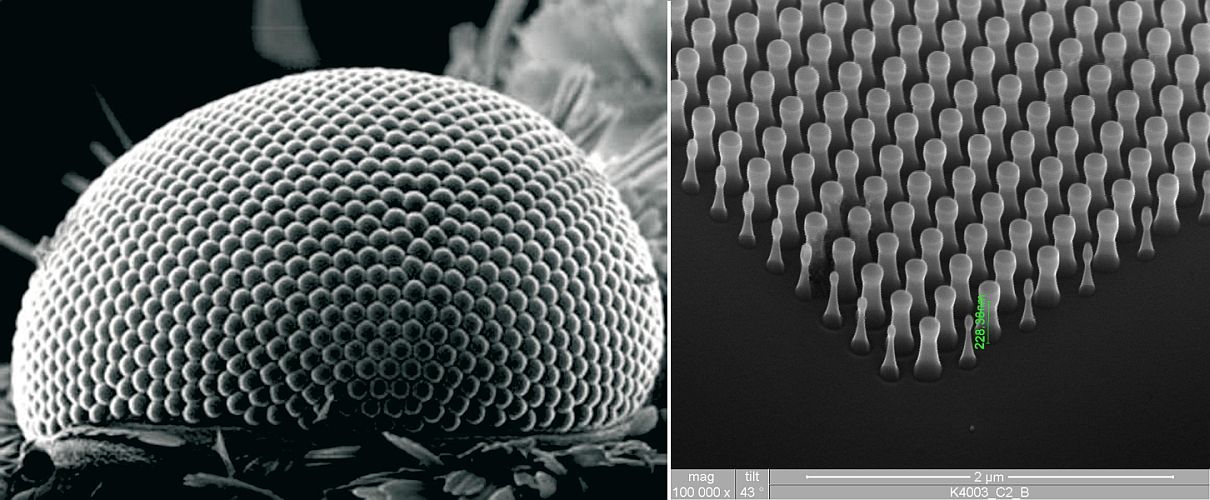Researchers observed that the moth eyeball consisted of numerous minute cones arranged in a pattern that diminish glare. This anti reflective property provides the moth with the ability to see during the night and at the same time makes them less visible to the predators around. The team reproduced the pattern on a flexible film and applied a thin layer of gold that could be used to coat various products as solar panels and electronic displays. They also discovered that the material so developed could also repel moisture and dust particles.
UC Irvine chemistry professor Robert Corn said that using gold in a simple procedure can transform a transparent film black. Interestingly, the team accidently discovered the film while testing for other ideas of coating products that they observed what appeared to be soot on their film, was the key to design an anti glare film.
To achieve the desired anti glare surface based on moth eyeballs, the team working on a nanoscale level, carved a repeating pattern of cones on nonstick surfaces as Teflon. These cones were then coated with a thin layer of gold, which considerably reduced the shine from the gold and eliminated any other reflecting light falling on it. The material was also highly water repelling.
Researchers say that in the future, the advanced coating can be used for anti glare solar panels that beam blinding sunlight, especially in residential area, often causing trouble for the neighbors and people passing by. And as the material surface repel water and dust particle to settle down, the efficiency of the solar panels can be enhanced. They can also be used for electronic displays that are difficult to use in sunlight. The coating can be applied to military for disguising weapons, eliminating sunlight or any other light to reflect from the weapon surface and thus making easier for the soldier to hide.
Source: Nature World News




